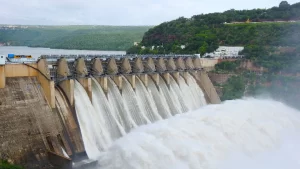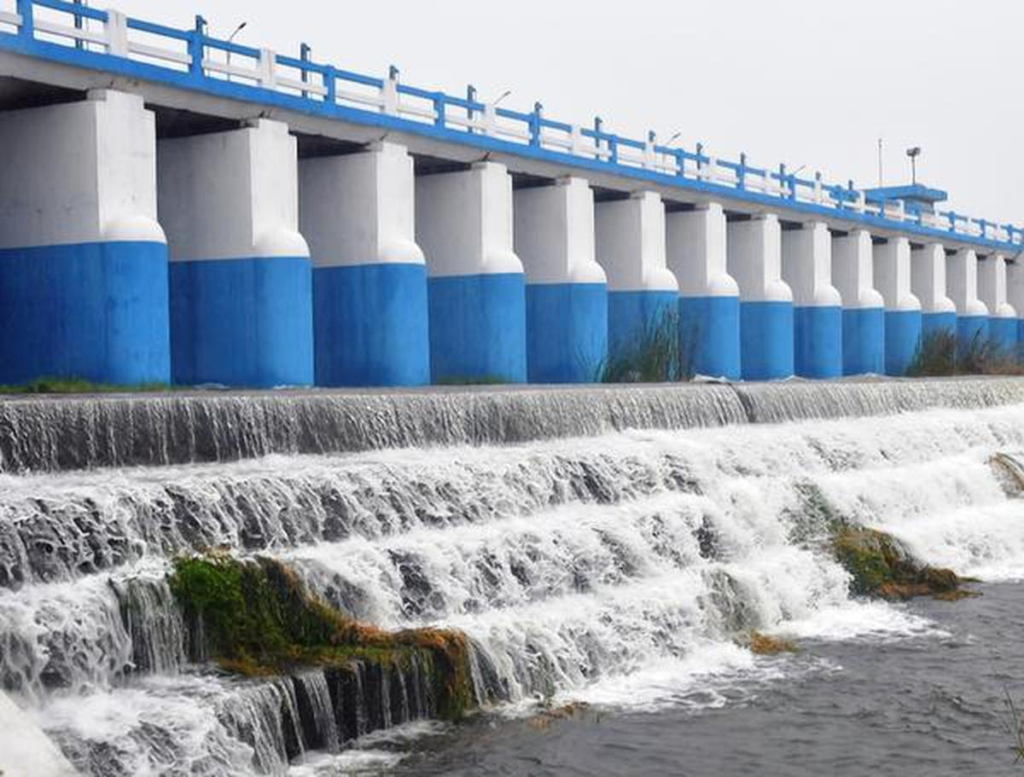Physical Address
23,24,25 & 26, 2nd Floor, Software Technology Park India, Opp: Garware Stadium,MIDC, Chikalthana, Aurangabad, Maharashtra – 431001 India
Physical Address
23,24,25 & 26, 2nd Floor, Software Technology Park India, Opp: Garware Stadium,MIDC, Chikalthana, Aurangabad, Maharashtra – 431001 India

By Vivek Saini
A recently published study by a two-person team from IIT Gandhinagar examined the hydroclimatic changes in the catchment areas and their effects on hydropower production in 46 significant dams spread across north, central, and south India using observations and climate projections. The study indicated that the current state of the hydropower industry depends on surface water flows with sizable and predictable volumes and as a result, it is susceptible to climate change. Climate change’s effects on the hydropower industry are unpredictable and not felt equally around the world. Depending on the time and size of changes locally, the size of the reservoir, the priority of the allocation, and the state of the energy market, it could be advantageous, detrimental, or insignificant.
HOW CLIMATE CHANGE AFFECTS HYDROPOWER PROJECTS
For greater electrical demands of India’s energy sector, the Himalayas have come to be synonymous with hydropower developments. The western and eastern Himalayan river basins have contributed significantly to India’s hydroelectric needs. Climate change could have a significant impact on the Himalayan rivers, and dams pose a serious threat to the region’s ecology.
Hydropower is a widely used renewable energy source that is frequently seen as having issues with social, ecological, and environmental factors when being built. Environmental degradation is a highly important problem that differs from nation to nation and has site-specific effects on geography, geology, and topography. The environmental problems range from tiny to major dams.
Research has suggested that hydropower projects, which are more vulnerable to the effects of extreme weather events, will be affected by climate change. Extreme weather occurrences have impacted hydropower projects over the previous few decades, according to Indian government records. Researchers and experts recommend investing more in climate-resilient buildings and assessing the climate risk of such projects before they begin as ways to reduce the effects of climate change.
Dr. Partha Jyoti Das, Senior Climate and Environment Scientist and also the in-house expert of CFC said, “Climate change is likely to cause changes in local and regional weather and climate patterns that would jeopardize dam operations and trigger more complex and intensive impacts downstream. It has been projected that Himalayan river basins like that of the Brahmaputra river may experience increased summer flows and more flooding for a few decades initially, due to rapid melting of Himalayan and Trans-Himalayan snow and glaciers.”
RISKS ASSOCIATED WITH THE HYDROPOWER PROJECTS
Contrary to coal-fired power plants, hydropower, the second-highest source of energy production with a 13% share, makes a substantial contribution to the production of clean electricity globally.
According to a study from the Indian Institute of Technology (IIT), Gandhinagar, climate change can drastically affect the Indian hydropower projects’ capacity to produce electricity due to the predicted increases in precipitation and warmth. Nevertheless, it would also raise the dangers associated with hydropower plants, including flooding and dam failure. It also showed that, depending on the region, the inflow of water to reservoirs of large dams is anticipated to increase by 7% to 70% in a warmer forecasted climate (up to 5 degrees Celsius) and more precipitation (between 5% and 33%). The majority of dams could eventually generate more hydropower (9%–36%) as a result of this increasing inflow. The impact of these changes in reservoir storage and streamflow, on hydropower generation, indicates that hydropower is susceptible to climate change, noted the study. It found that hydropower projects in central India are likely to see higher inflow.
According to a study recently published in Nature Geoscience, the dangers associated with melting glaciers pose a threat to more than 650 hydroelectric projects that are planned for or being built in the Himalayan region. In comparison to current projects, many of the new ones are located significantly upslope, nearer to glaciers and glacial lakes in high-altitude regions, making them more hazard-prone, the report finds.
These risks include rock-ice avalanches, debris flows, lake outburst floods, and landslides, all of which may become more common as a result of glacier melt and slope destabilization. According to Dongfeng Li, the study’s lead author, lake outburst floods, particularly glacial lake outburst floods (GLOFS) and landslide-driven lake outburst floods, pose the greatest hazard.

HOW CLIMATE CHANGE ACCOUNTS FOR DAMAGES TO HYDROPOWER PROJECTS
Unusual weather damage to hydropower projects is nothing new in India. At least 24 hydroelectric projects were impacted by flooding between 1974 and 2008, according to Central Electricity Authority (CEA) documents, which interfered with their regular operation. Seven of these projects experienced impacts during construction, compared to 19 during operation and maintenance, according to the research. With a share of 11% of India’s total installed capacity, hydropower projects are the country’s third-largest source of electricity, after coal (which accounts for 50%) and renewable energy (30%). India currently operates 211 major hydro projects (above 25 Megawatt) with a total installed capacity of 46.8 GW. A total of 41 new hydroelectric projects (HEP) with a targeted production capacity of 17 GW are now under construction. They comprise 30 sizable HEPs that are still in the planning stages and are located in the vulnerable Himalayan region.
Following the controversy surrounding the Joshimath incident, the Ministry of Power recently informed the Indian Parliament that all large hydropower projects are only given the go-ahead after receiving environmental clearances from the Ministry of Environment, Forestry, and Climate Change (MoEF&CC), and even then only following a thorough evaluation by an Expert Appraisal Committee (EAC).
The study stated that both north and central India are anticipated to witness a bigger rise in precipitation than south India. Most reservoir catchments are likely to see enhanced precipitation as a result of global warming. The increasing precipitation will affect hydropower production and the inflow to the dams more in north and central India than in south India.
IS CLIMATE RESILIENCE THE ANSWER TO CLEAN ENERGY TRANSITIONS?
The resilience of HEPs is crucial for the sector, according to the International Energy Agency (IEA), which conducted research on the prospective effects of climate change on hydro projects in South America and Africa. For hydropower to continue serving its purpose in the transition to renewable energy, climate resilience is necessary. In its research, it was said that “without boosting climate resilience, adding new capacity and flexibility services can swiftly be disrupted by the hazards associated with the increasingly frequent extreme precipitation events.” The IEA stated that nations must implement “soft measures,” such as changing legislation to reward HEP developers for adding climate-resilient structures, regulating their obligatory compliance, and other measures. Also, it pushed for “hard measures” that aimed to strengthen building materials in order to fend against the effects of climate change.
The IIT Gandhinagar study also promoted the use of enhanced early warning systems (EWS) to better equip HEPs to deal with unfavorable circumstances as the Himalayas’ biodiversity and river hydrology are seriously under risk due to the long-term effects of HPPs under climate change scenarios. The spring disappearance dilemma needs to be rigorously examined in order to offer long-term, scientific answers and flood disaster mitigation due to the rising frequency of landslides, avalanches, and flash floods.
The International Hydropower Association (IHA) 2019 also created a manual for carrying out hydroelectric power projects that are climate resilient on a worldwide scale. It recommended four initiatives for these HEPs to do in order to strengthen them against the consequences of climate change. They included the following: screening for climate risks, preliminary analysis, climate stress test, management and monitoring of climate risks, reporting, and assessment.
If you have any queries or come across suspicious content related to climate change or the environment and want us to verify them for you, then send them to us on WhatsApp at this number: +917045366366
References: